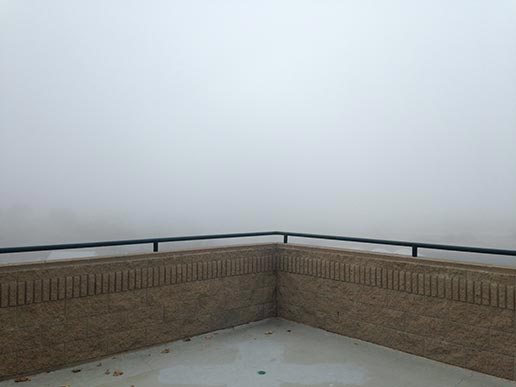How to Drive Safely in Fog

Fog presents an added danger to new teen drivers.
Driving in Fog – An Unexpected Danger
Most drivers know all about the bad-weather basics: Ice is slippery. Rain mixes with the oil from the road. Snow can limit visibility. But there’s one element that can go overlooked, or worse – underestimated. Fog.
Think fog isn’t dangerous? According to weather.com, there are 38,000 crashes, 15,000 injuries, and 600 deaths – all due to fog.
Of course, San Francisco is particularly famous for its fog, and New York has its share of fog (and smog!). Even sunny San Diego gets a lot of it. But by understanding fog, and knowing what to expect, you can help prevent unnecessary crashes – and deaths – when it’s foggy.
What the Heck is Fog, Anyway?
Fog is a cloud that forms in contact with the ground, usually as air cools. Fog tends to occur in the mornings and evenings, and is usually at its worst along the coast. Avoiding these places and times, if possible, is a great first step.
Increase Your Distance
If you can’t avoid the fog altogether, the first thing you should do is to increase the distance between your car and the car in front of you. In good weather, you want a 2-second distance. When driving through fog, you should up the distance to 5 seconds.
Watch Your Windows
Another element that can limit your visibility is the moisture accumulating on your windshield. Use your defroster in the front (and back, if you have it) to keep your windows clear. Keep it on a warm-to-hot setting, as you are trying to dry the moisture that has built up.
Adjust Your Lights
Of course, you want to have your lights on, both to increase your own visibility, as well as making your car visible to other cars around you. If your car is equipped with fog lights, use them. Fog lights are typically mounted lower than your regular headlights, sometimes even below the bumper, and are aimed at the ground in front of the car.
One common mistake inexperienced drivers make is to use their high beams when driving in fog. If the fog is thick enough, it will only reflect the light from the high beams back at the driver – the exact opposite of what you wanted to happen.
Minimize Distractions
Of course, you want to be distraction-free whenever you’re driving, but we all know that doesn’t always happen. Because the weather itself is a major distraction, you want to eliminate anything else that could be taking your attention. Keep the radio off, so you can listen for other cars. Stay off the phone, even if you have a hands-free device. The more you can focus on actually driving, the safer you’ll be.
Beware of Animals
Because they can’t see you from far off, animals tend to feel more comfortable walking on the road when it’s foggy. And because you can’t see them, there’s less time to react, which causes a significant increase in roadkill.
Black Ice
When it’s foggy and the temperatures are freezing, black ice can occur, and as you most likely learned in drivers ed, it’s extremely dangerous. Black Ice is a very thin, dark sheet of ice that is difficult to see in good visibility, and near impossible to see when it’s foggy.
Know Your Limits
If visibility gets too pad, and you really can’t see more than a few feet in front of you, pull over wherever it’s safe. Wait it out in a parking lot. Fog doesn’t last forever. Even the foggiest places in the world – Argentina, Newfoundland, and Point Reyes, California –have over 100 clear days each year.
Remember – it’s always, always, always, better to arrive late, than not arrive at all.










